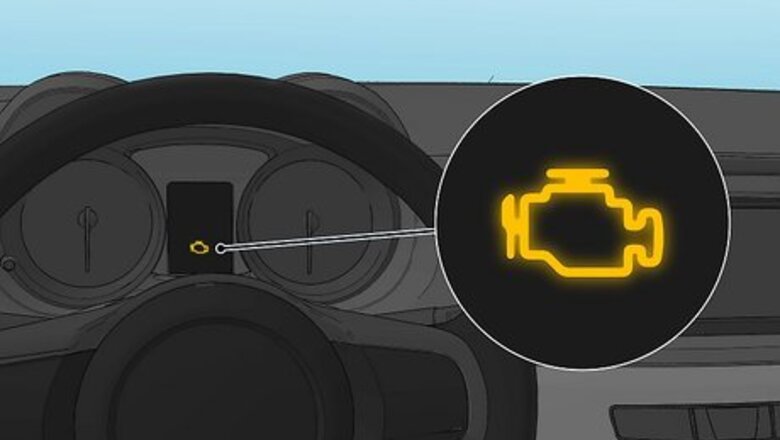
views
- If your check engine light comes on but turns off randomly, it’s a sign you have a minor issue that comes and goes and is tripping the system.
- A check engine light that's flashing can be a sign of a serious issue with your vehicle's engine and usually requires immediate attention.
- Don't continue to drive with a flashing check engine light unless you can make it quickly to a mechanic and your engine is not overheating.
Why is my check engine light turning on and off randomly?

It could indicate an issue with your vehicle that comes and goes. This is known as an intermittent fault, and it’s a sign that the problem is borderline. Something is close enough to wrong that it occasionally triggers the light, but the problem occasionally recedes to the point that the ECM doesn’t register an error. Check engine lights do not just go away on their own. The odds are very high that an intermittent fault will eventually turn into a solid check engine light, so it's still important to address the issue even if the light occasionally goes off. For example, a loose gas cap is a common cause of a check engine light (air gets in the fuel, which throws the air-fuel-spark mixture off). If it’s only slightly loose and letting air in for short bursts, the light may turn on when air is coming in, then off when there isn’t enough air coming in to mess with the ratio.
Why is my check engine light flashing?
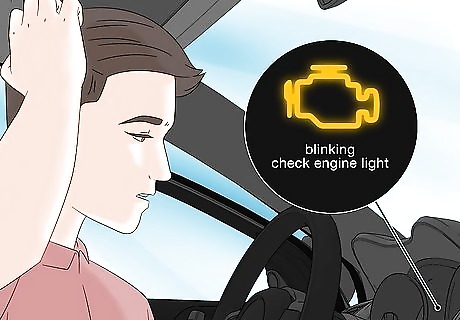
A blinking check engine light may indicate a serious problem. A solid check engine light could be caused by something as simple as a loose gas cap, but a flashing check engine light is a bigger deal. The flashing is designed to get your attention, so do not ignore a blinking check engine light. On some modern vehicles, the check engine light will change colors instead of blinking. If it goes from yellow to red, it means the same thing as a blinking check engine light.
How to Diagnose the Issue

Use an OBD-2 scanner to scan your car’s computer for errors. Locate the OBD-2 port in your vehicle. In most cases, it’s under a dashboard panel below the steering wheel. Plug the OBD-2 scanner into the 16-pin port and turn your car on. Then, press the “run” or “scan” button and wait for the scanner to return an error code. That error code will tell you what specifically is wrong with the vehicle so that you can get it fixed. If the check engine light doesn’t go away after you resolve the problem, don’t worry. You just need to reset the check engine light by completing a full drive cycle. EXPERT TIP Hovig Manouchekian Hovig Manouchekian Auto Repair & Design Specialist Hovig Manouchekian is an Auto Repair and Design Specialist and the Manager of Funk Brothers Auto, a family-owned business operated since 1925. With over 30 years of experience in the automotive industry, Hovig specializes in the process of auto repair and maintenance. He is also very knowledgeable in common automotive issues and needs including engine repair, battery replacement, and windshield accessory and maintenance. Hovig's knowledge and hard work have contributed to Funk Brothers Auto winning Angie's List Super Service Award for five consecutive years. Hovig Manouchekian Hovig Manouchekian Auto Repair & Design Specialist Start by checking the car's computer (if it's 1996 or newer). Most modern vehicles store trouble codes that can help diagnose problems. Scan the computer for any stored or pending codes – they can be a valuable first step in troubleshooting car issues.
Common Causes of Check Engine Light Coming On
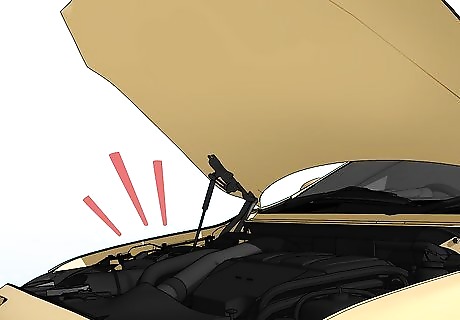
Engine misfire This is far and away the most common cause of a blinking check engine light. A misfire occurs when one of the cylinders in your engine doesn’t fire (or fires incorrectly). This causes your engine to lose a portion of its power and makes it difficult for your vehicle to maintain speed. This is usually caused by an electrical or mechanical failure, although a misfire can occur so long as there’s a problem with the air/fuel mixture. The cost to repair a misfiring cylinder can range from $100-1,000 depending on the underlying cause. It could be a bad spark plug, a dead ignition coil, ignition system failures, or a crack in your vacuum hose.

Bad sensors This is a best case scenario since it means nothing is physically wrong with your engine. The engine control module (ECM), engine control unit (ECU), and mass airflow sensor (MAF) are all responsible for monitoring your engine and the fuel/air/spark that powers it. If one of those sensors has gone bad though, it can trick your vehicle into thinking something is actually wrong. Replacing and resetting these sensors can run anywhere from $500-1,200 depending on what needs to be replaced.
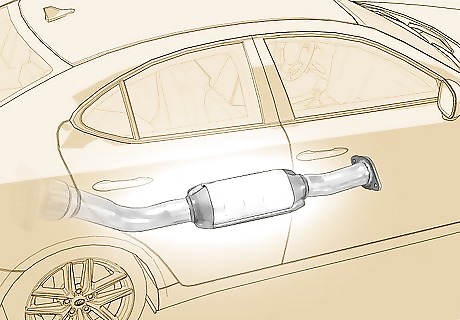
Catalytic converter issues Your catalytic converter is located under the vehicle between the engine and the exhaust pipe. Its job is to soak up the toxic fumes created by your engine so that you don’t pollute the environment. If that converter is damaged or bad though, those fumes have nowhere to go. If they back up into the engine, it will trigger a flashing check engine light. If your catalytic converter is bad, you may smell rotten eggs in or around your car. This is the sulfur your converter would normally be shielding you from. Catalytic converters can run up to $2,000 depending on what kind of model your vehicle needs.

Overheating If you haven’t changed the coolant in your vehicle or your engine thermostat has gone bad, the excess heat in your engine can cause the check engine light to come on and start blinking. Do not continue driving if your engine is running hot and the check engine light is blinking, as this is a sign your engine may catch fire. If you just need a coolant flush, it’ll only cost $100-150. If your thermometer needs to be replaced, it may cost a bit more but it shouldn’t be too expensive.
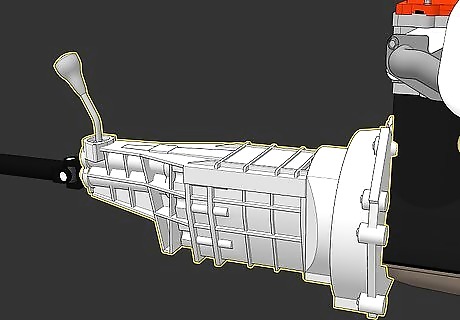
Transmission problems The transmission is responsible for transferring energy from the engine to the wheels. If it’s not doing that properly, it could create a power differential that puts strain on your engine. If this strain becomes intense enough, it could lead to misfires, engine problems, and all sorts of issues that cause your check engine light to blink. Transmission problems are tricky and often require a specialist. Depending on the underlying problem, this could run anywhere from $100-200, to $6,500 for a transmission rebuild.
Is it safe to drive with a flashing check engine light?
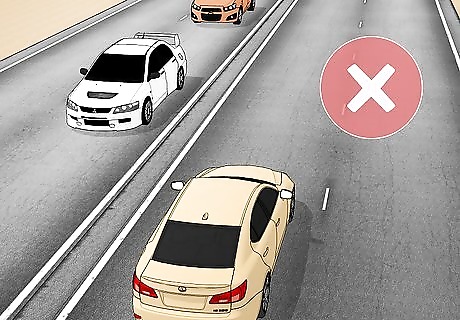
No, it’s generally not recommended to continue driving. There are a handful of potential causes for a flashing check engine light that aren’t a big deal, but the issue could be more serious, and it's not worth the risk. If you keep driving and ignore the light, you could be causing irreparable damage to your engine. Even worse, if your engine was misfiring because you don’t have enough oil, your car could catch fire. Unless you’re very close to your mechanic and can get there fast, your safest option is to pull over and call a tow truck to take you to the mechanic. If you do choose to drive to a mechanic, stay in the slow-moving lane on the right, put your hazards on, and be ready to pull over at a moment’s notice. Your car could stall out or die soon.














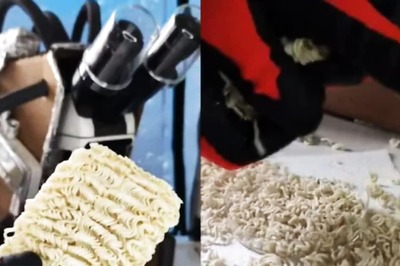



Comments
0 comment